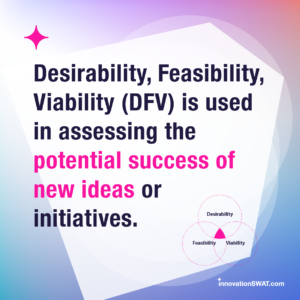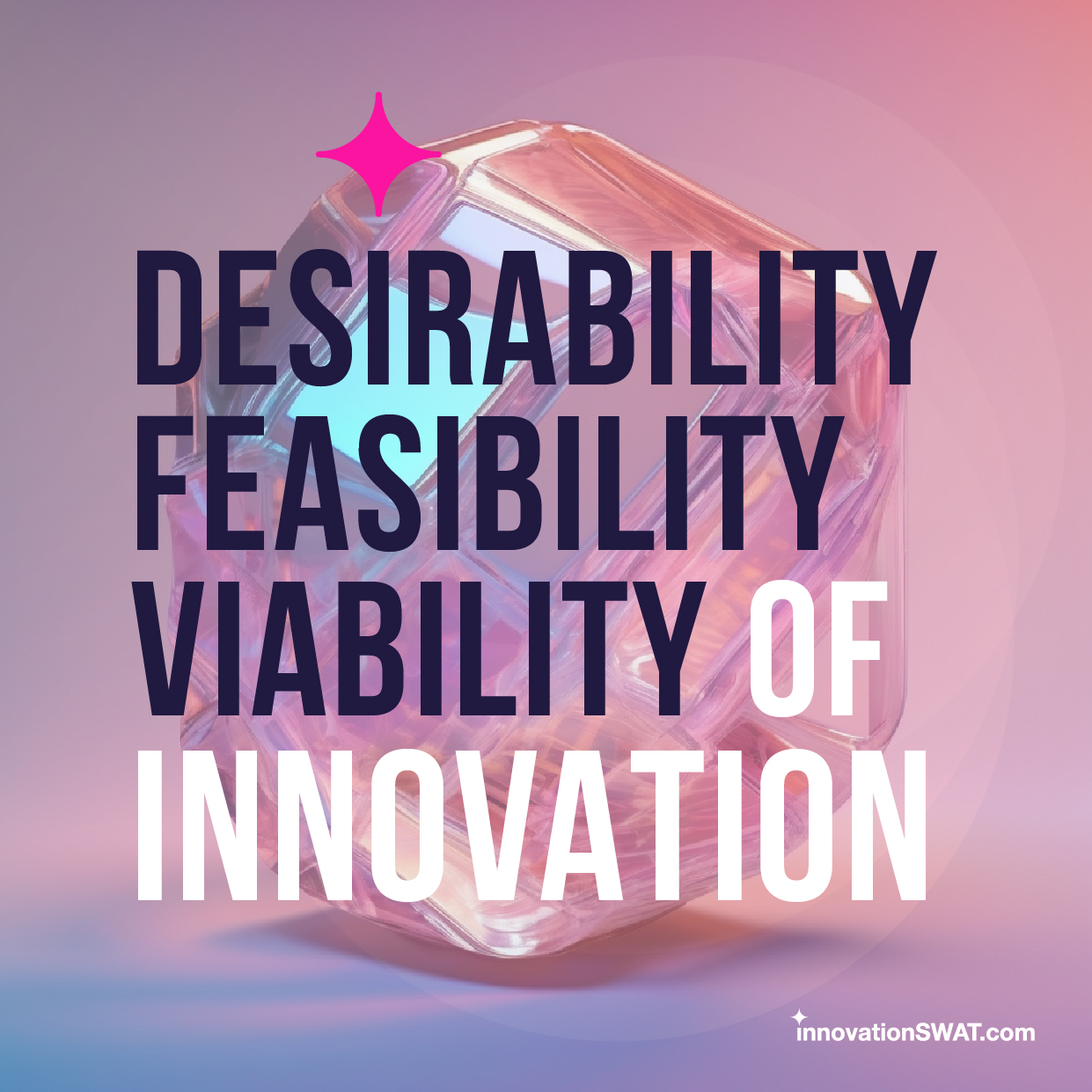The Desirability, Feasibility, Viability (DFV) framework is a product development and innovation framework that evaluates potential business ideas, or innovation concepts based on three key dimensions: desirability, feasibility, and viability.
DFV is a widely used framework for assessing the potential success of new product ideas or business initiatives. It has been popularised and widely adopted in the field of design thinking and innovation.

The DFV framework emphasises the importance of considering various aspects to evaluate an idea or concept holistically. Here’s a breakdown of each dimension:
Desirability:
This dimension focuses on understanding customer needs, wants, and preferences. It involves evaluating whether the business idea or innovation concept is desirable to the target customers, aligns with their values, solves their problems, and meets or exceeds their expectations.
Desirability considers factors such as user experience, emotional appeal, market demand, and customer satisfaction.
Feasibility:
Feasibility assesses the technical and operational feasibility of the idea. It requires evaluating the realistic implementation of the concept and assessing the availability or potential development of necessary resources, technology, infrastructure, and expertise.
Besides, feasibility considers factors such as technical constraints, resource availability, timeframes, scalability, and potential risks or challenges.
Viability:
Viability focuses on the economic and business viability of the idea or concept. It involves assessing the potential market value, revenue generation, profitability, and long-term sustainability.
Moreover, it consider factors such as market size, competitive landscape, pricing strategies, cost structure, business models, and return on investment.
Relationship between the concepts:
- For successful business outcomes, one must consider the interconnectedness of desirability, feasibility, and viability simultaneously.
- To attract customers, implementability and revenue generation, a product or service must possess desirability, feasibility, and viability.
- Throughout the product development and implementation process, the various teams within a business collaborate to ensure that they address these concepts.
- Regular communication and collaboration among cross-functional teams are essential for aligning concepts and making informed decisions.
By evaluating these three dimensions, the DFV framework helps organisations make informed decisions about pursuing or refining potential innovations. It fosters a balanced assessment of the idea’s customer desirability, technical feasibility, and economic viability.
Successful innovation teams can seamlessly integrate DFV in their ideas & business cases to maximise business outcomes.
